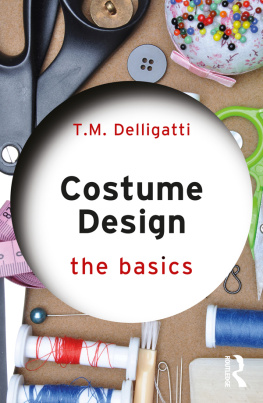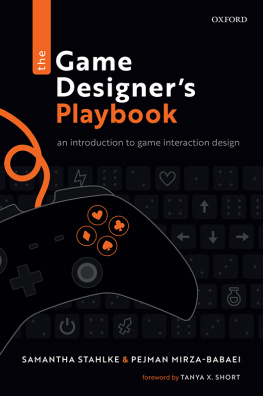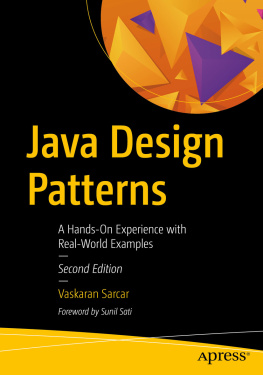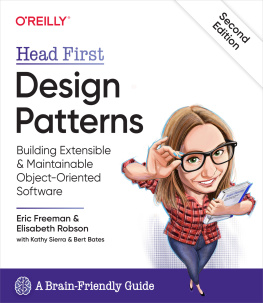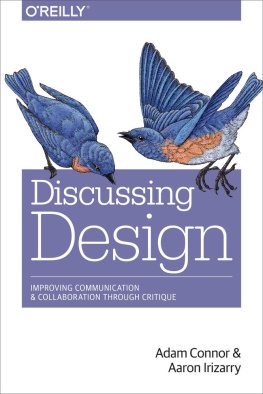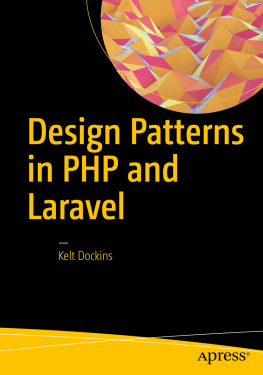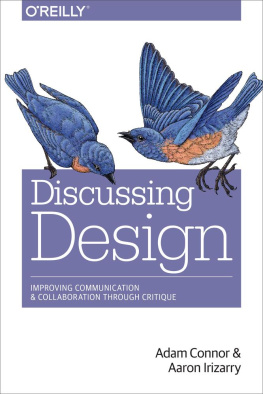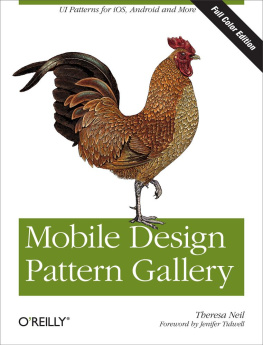Communicating the UX Vision
13 Anti-Patterns That Block Good Ideas
Martina Hodges-Schell
James O'Brien
Table of Contents
Copyright
Acquiring Editor: Todd Green
Editorial Project Manager: Lindsay Lawrence
Project Manager: Stalin Viswanathan
Designer: Matthew Limbert
Morgan Kaufmann is an imprint of Elsevier
225 Wyman Street, Waltham, MA 02451, USA
Copyright 2015 Martina Hodges-Schell and James OBrien. Published by Elsevier Inc. All rights reserved.
No part of this publication may be reproduced or transmitted in any form or by any means, electronic or mechanical, including photocopying, recording, or any information storage and retrieval system, without permission in writing from the publisher. Details on how to seek permission, further information about the Publishers permissions policies and our arrangements with organizations such as the Copyright Clearance Center and the Copyright Licensing Agency, can be found at our website: www.elsevier.com/permissions.
This book and the individual contributions contained in it are protected under copyright by the Publisher (other than as may be noted herein).
Notices
Knowledge and best practice in this field are constantly changing. As new research and experience broaden our understanding, changes in research methods, professional practices, or medical treatment may become necessary.
Practitioners and researchers must always rely on their own experience and knowledge in evaluating and using any information, methods, compounds, or experiments described herein. In using such information or methods they should be mindful of their own safety and the safety of others, including parties for whom they have a professional responsibility.
To the fullest extent of the law, neither the Publisher nor the authors, contributors, or editors, assume any liability for any injury and/or damage to persons or property as a matter of products liability, negligence or otherwise, or from any use or operation of any methods, products, instructions, or ideas contained in the material herein.
British Library Cataloguing-in-Publication Data
A catalogue record for this book is available from the British Library
Library of Congress Cataloging-in-Publication Data
A catalog record for this book is available from the Library of Congress
ISBN: 978-0-12-420197-2
For information on all Morgan Kaufmann publications visit our website at www.mkp.com

Dedication
For Ed and my parents. You are my inspiration.
For Melissa, and for Mum and Dad.
Foreword
At the end of the movie Soylent Green, Charlton Heston famously cries out, Its people! when he discovers the primary ingredient in the food system. Every time someone sends a goodbye note on their final day at a job, they always say, Ill miss the people the most.
At the center of a great user experience design effort is you guessed it people. In the case of the UX project, the people are our customers and we function as their main advocate in our agencies, companies, and teams. We study them. We observe them. We learn their motivations and their needs. We figure out how to help them and ensure that our solutions meet their needs. We know how to speak to them. More often than not, we also know how to speak to each other. Why then do we struggle as a profession to make compelling conversation happen with our colleagues in other disciplines, our leaders and executives, and our clients?
Technology shifts in the last decade have made conversation with our customers increasingly easier, faster, and richer with insight. Capturing this insight and translating it to our colleagues and clients is core to our goal of creating delightful and usable products. Its also core to building successful collaborative teams. It is these highly engaged, cross-functional teams (made up of UX designers, visual designers, content strategists, software engineers, product managers, QA engineers, marketers, and others) that can properly respond, in a timely fashion, to this vast trove of insight now available to us. The more effective these teams are, the more responsive the organization can be to changing customer needs.
UXers are uniquely positioned to take advantage of this new reality to bridge the gap between individuals and interactions while shedding the constraints of processes and tools.
This new opportunity is often seen through the lens of facilitation. UXers are the most qualified individuals on a team to take the lead in facilitating productive, meaningful team discussions. We know how to take input from various sources, synthesize it into something meaningful, and present it back to our customers for feedback. Yet we struggle to do this with our own teams and stakeholders.
It is the tactics covered in this book that will help you make, and continue to make, a bigger impact on your organizations. They will teach you to translate your work into language your audience cares about. You will learn how to take data and metrics, and use them to not only inform your design process, but to make a compelling case for the decisions youve made.
Martina and James have put together a treasure trove of tactics and insights to ensure that UX is at the center of these Agile, collaborative teams. And it is with this know-how that we, together with our colleagues in other disciplines, can continue to build amazing products moving forward.
Jeff Gothelf
author, Lean UX
August 2014, New York, NY
Acknowledgments
Many thanks to our great editing team at Elsevier, especially Meg Dunkerley and Lindsay Lawrence, for making this book happen.
A special thank you to all our contributors who shared their stories with us: Aline Baeck, Chris Downs, Chris Nodder, Eli Tofty-Andersen, Evgenia Grinblo, Jonathan Berger, Sarah B. Nelson, Richard Wand, Sophie Freiermuth, and Jeff Gothelf.
Many thanks for the feedback and patience of our technical reviewers: Darci Dutcher, FJ van Wingerde, Linda Newman Lior, Richard Wand, and Spencer Turner.
Chris Rain contributed the design of our playable card game, for which you can find downloading instructions in . Were so grateful that he shared his graphic design skills with us to create such a beautiful card deck.
Thanks also to all of our friends and colleagues who agreed to take and pose for photographs. And to Pivotal, Method, Immediate Media, and Proximity London: thank you for your understanding of our time and space needs while we worked on this book.
Martina wants to thank Ed, her parents, and her friends for the inspiration, love, and support to make this project a reality.
James wants to thank Melissa, his parents, and the UXers of London for the support, solace, and sanity-checking. He also wishes to apologize to the many, many people on whom he has researched his own anti-patterns over the years.
Introduction
As creative actors in the world of digital product development, UXers and designers are expected to combine our training and experience in the pursuit of great outcomes. But all too often, the focus of that training and experience is on the technical aspects of creating design, leading us to fall short when it comes to the other important aspect of our roles: explaining our work to the people who are developing and paying for it.


